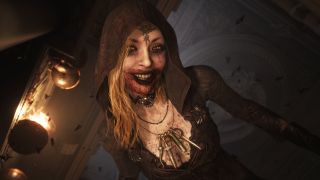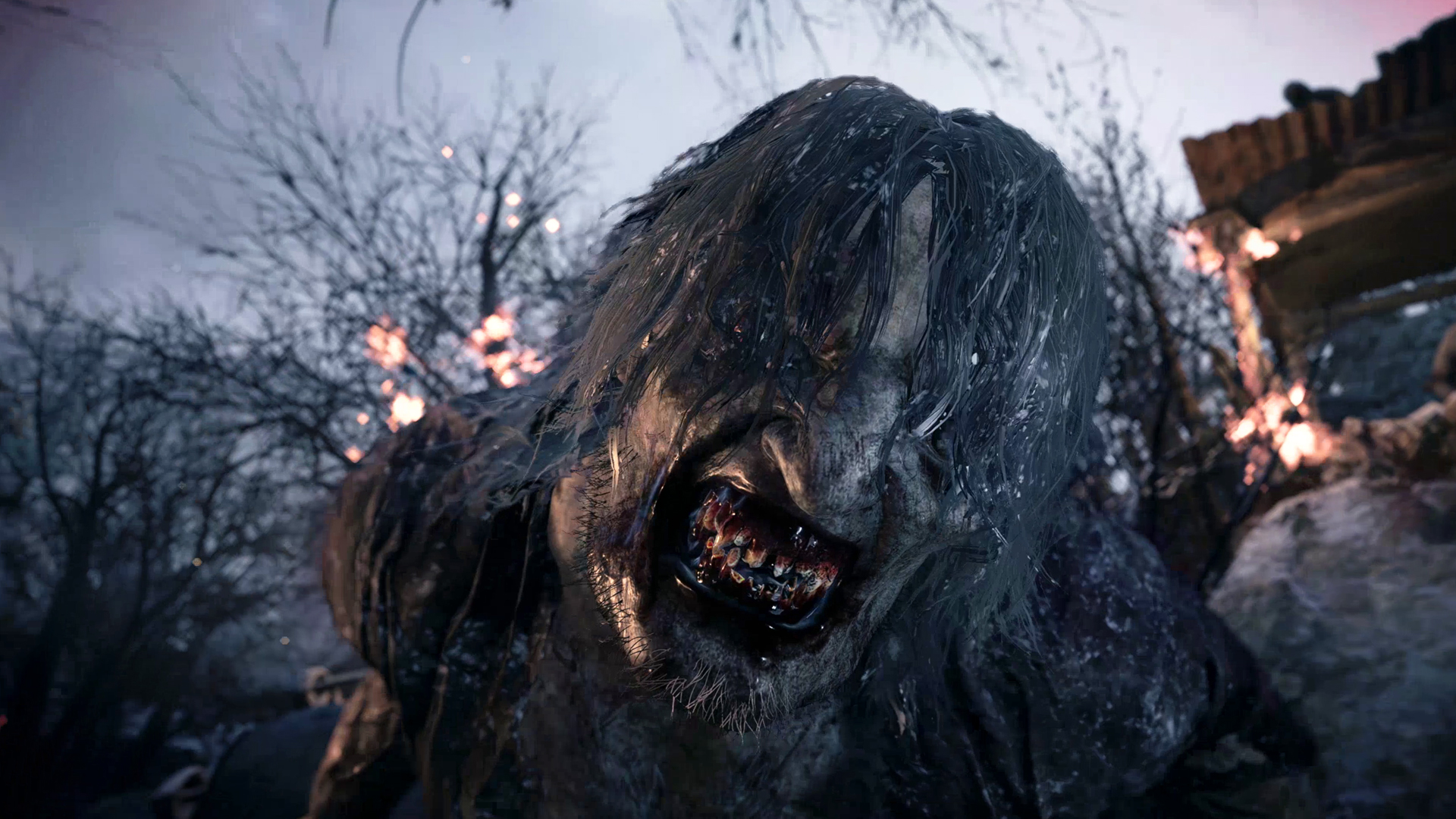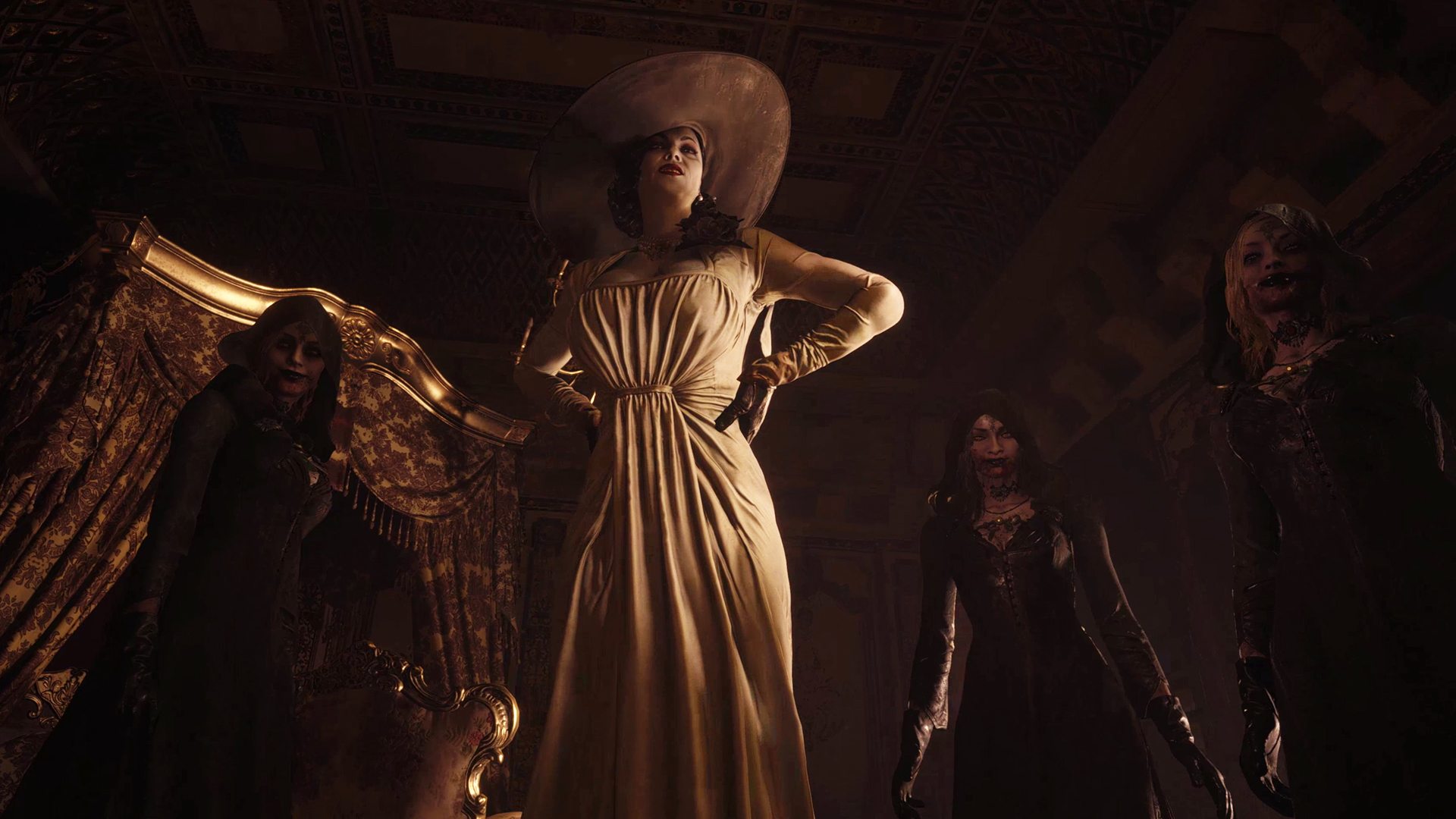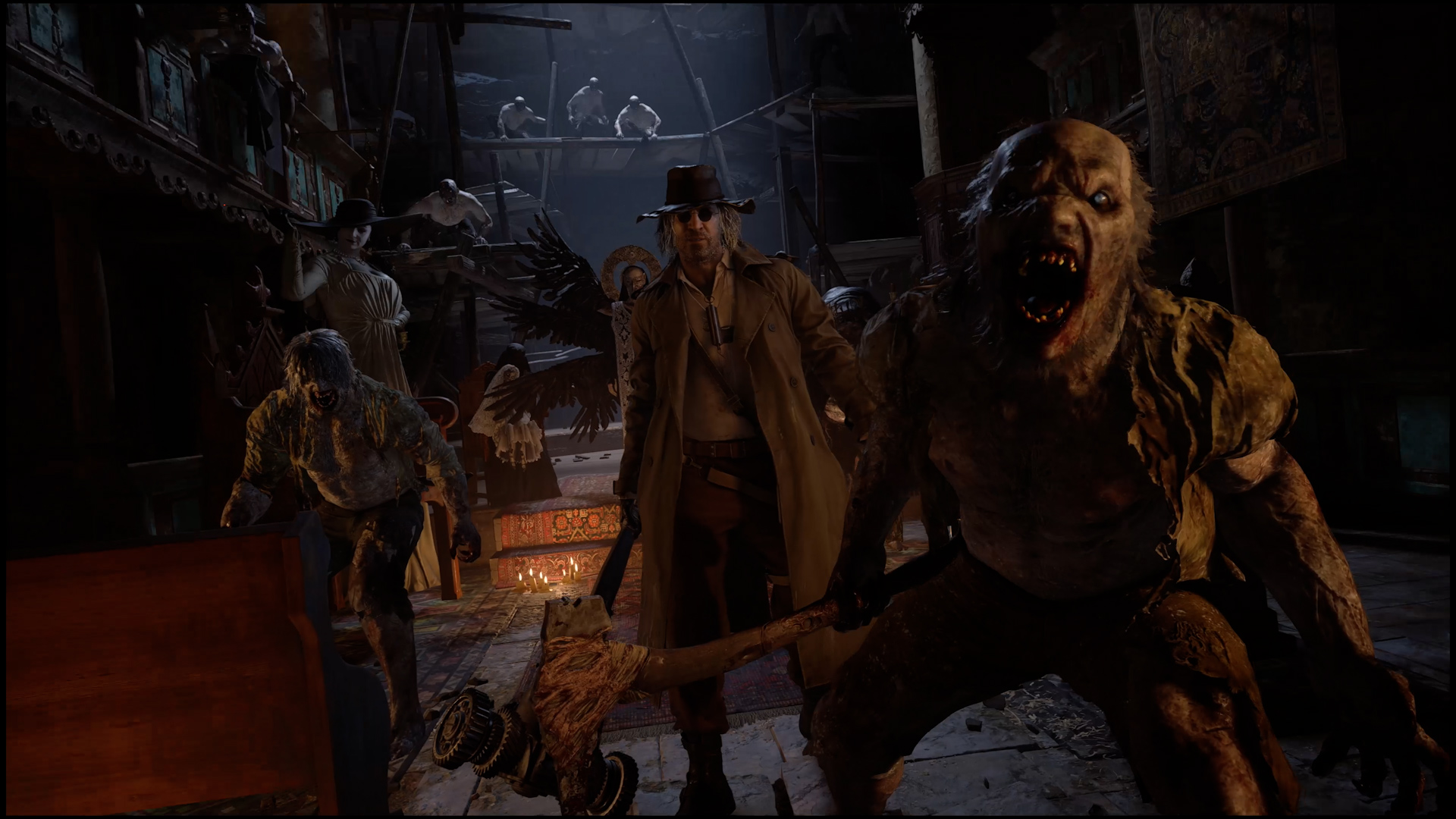Gruesome violence is essential to Resident Evil Village | PC Gamer - ketchumdincestamed58
Gruesome violence is essential to Resident Evil Village

Resident Iniquity games are hot. Folks find their parts ripped off, limbs bring eaten, entrails spill across the floor on a regular basis. The gore and violence on display is deliberately consuming, designed to shuffling you feel upset, and has been increasing exponentially since the series began. In the original you had zombies playfully biting your neck, but past the seventh instalment your hand was getting severed away a rusty chain saw—one of several atrocities committed against your unfortunate appendage. With Resident Evil Hamlet right away upping every ante when it comes to horrific depictions of brutality, you power wonder what full point there is to some of IT. Does the violence in the Resident Evil series serve any purpose the least bit, beyond shock prize?
Horror stories—particularly about the undead—possess always been vectors for some sort of message; we're drawn to the genre because it highlights unconscious fears and allows the States to face ideas we would normally avoid. Night of the Zombi is often viewed every bit a critique of Cold War politics, American racism, and societal norms in the 1960s. Earlier stories about zombies and zombie-like creatures flirt along existential fears about death and disease, as well arsenic xenophobia.

Resident Evil, being conceived in the 1990s, has always had a peculiar swot to pick with big business. Late-leg capitalist economy on the Q.T. eating away at the juicy flesh of smart set. The Umbrella Corporation is the classic evil force in the serial publication—an incalculably monumental medical specialty pot that looks all nice and helpful on the come up but uses its wealthiness and research to make monsters and plagues. Early games were non in the least subtle about this, stating expressly that this obviously bad caller did really sexy things and now everyone is a zombie. Players are confronted with the immediate aftermath of embodied interests gone feral, forced to heavy weapon down ordinary people who got in the way, attacked by inside-impermissible versions of formerly good dogs.
In Resident Wrong 4 through to 6, the games tell off more declamatory and laughable stories about kidnapped girls and zombie presidents. As a result, the violence feels silly and detached, like a motif ballpark cod. Lurid scenes are played for fun, and father't flavor personal or displeasing beyond eliciting a disgusted reaction. Resident Immoral games vindicatory weren't about anything any longer, and wildness for the sake of ferocity is pretty dull.
Resident Hellish 7 and Village have marked a sack back to those destroyed horror roots, also as being a big, gross jump in terms of violence. Partly of that is down to the improved technology and faithfulness at Capcom's disposal compared to the six some polygons the franchise started with, but there's more to it than just developers having fun blood feigning toys.

Both the in vogue games in the serial are set in a station-Comprehensive world (even if Comprehensive never truly dies); they tell stories that are less about some big evil, and more about the standing, destructive personal effects of the capitalism that ran vertical in previous games. Undiscovered entities either institute or continued research started by Umbrella and, earlier you know it, infected ships holding thrown-away bioweapons are washing leading in Louisiana, and strange materials are being accessed by religious figures in snowy Romanian villages. Resident Evil 7 and 8 don't want to tell you about the corporate types who made money off hurt, they wish you to know about the suffering itself, and the people hurt by a smart set that cares to a greater extent about money and power than human life.
All the violence begins to make a lot more sense because the victims matter. The Baker family were innocent, merely the system of rules which corrupted and killed them doesn't forethought, and the horrifying violence they inflict happening Ethan Winters—as well as the right and physical nightmares inflicted on them—are necessary to understand the point the game wants to make.
The said goes for Village, where the residents of the titular colonization are fed into an uncaring substance grinder to benefit the rich and powerful Lords. We indigence to reckon every last those quotidian people die in horrible ways, because it shows us honorable how little the dominant forces of this world care. Making the villains of Village churchly leaders and not-so-exaggerated reflections of classic aristocracy ISN't a coincidence, information technology's a no-nonsense antiparallel to the modern disconnect between rich and inadequate. Lady Dimitrescu sits in her over-decorated dwelling, literally looking downcast on the hamlet, and we see that power dynamic emphasised when Ethan spots the castle looming in front of him at the start of the game. Dimitrescu plays at feudalism, and keeps the dirt and suffering of her victims low depressed, out of sight. Which means it's important that we see it.

At one point, Ethan retreats into the donjon surface area of Castle Dimitrescu and finds IT weighed down of sword-wielding zombies. Worse than being stabbed, bitten and destroyed by these monsters is the Apocalypse that these are failing experiments—women from the area who weren't lucky enough to get on sexy vampires. It's a graphic reminder of how this domain treats the threatened, and your sole options equally a player are to ignore it or put them out of their misery.
Later encounters with the other Lords of the Settlement present us with the duplicate gulf betwixt the haves, who do whatever they want, and the have nots, World Health Organization practise what they're told. Heisenberg experiments on the corpses of villagers without their consent, for his own selfish ends, so makes you woof apart the bodies; Moreau does his own awful trials happening the unwilling sustenance mostly because his beloved leader makes the order. Beneviento's plane section of the game is the least openly convulsive and—not coincidentally—she displays the least despite for the villagers, presenting a more tragic and personal story amid this world of bloody nightmares. The Lords themselves are also victims of an even higher power, stuck in the cycle of trickle-downcast violence that makes them slaves to their boss, and eventually rewards them with simply a bloody death.
While the violence in the series is increasingly confronting, having story and subtextual reasons means it always feels like it has a office—at any rate in the earlier and most recent entries. These scenes push the darker message about the fate of the masses in a world where the powerful cause none need of constraint. It's fun to laugh at how much trauma Ethan's hands go through, but IT's rhetorical, not gratuitous. Resident physician Evil wants us to be unable to aspect away from the atrocities of its humans, particularly as it shifts focus on from villains like Umbrella to victims like the Bakers and the residents of the village. Everything is chaos, life is slanted, people experience brutality at the hands of powerful forces, and that should be painful to watch. Then, at the oddment of everything, you get to bring down a bit brutality on the powerful, as a cathartic treat.
Source: https://www.pcgamer.com/gruesome-violence-is-essential-to-resident-evil-village/
Posted by: ketchumdincestamed58.blogspot.com


0 Response to "Gruesome violence is essential to Resident Evil Village | PC Gamer - ketchumdincestamed58"
Post a Comment